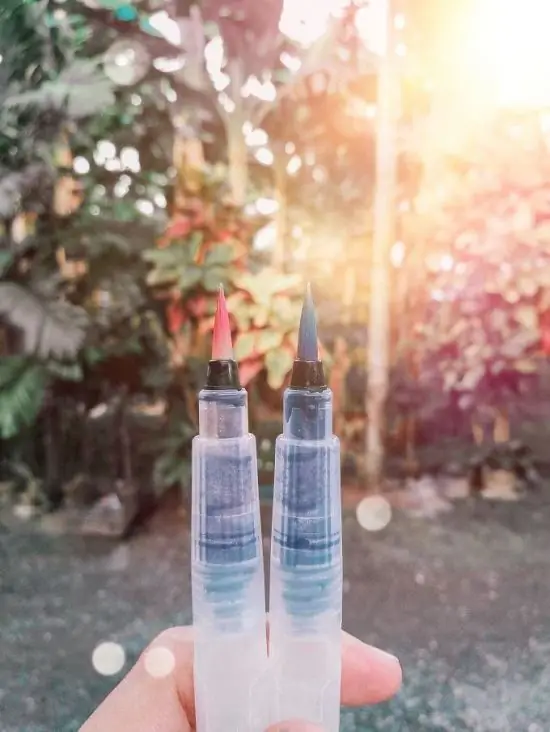Waterbrush is a long-standing instrument, but many artists are still eyeing it. In terms of functionality, it differs from the usual brushes for drawing, and there are both pros and cons in it.

Among artists - amateurs and professionals - such a drawing tool as waterbrush / aquabrush is gradually gaining popularity. There are also other names: brush with a water reservoir, water brush. To a certain extent, this tool is innovative, for many it is still extremely unusual. Some artists are skeptical about such brushes and speak negatively about them. However, there are more and more fans of waterbrushes every day.
Main advantages
Waterbrush is a synthetic brush with a flexible plastic body. The process of filling the tool with water or other liquid is very simple: you need to unscrew the brush, pour the selected liquid into the tank and twist the brush back tightly. The supply of moisture is carried out either in automatic mode, or with a slight pressure on the cushion of the body. This eliminates the need to keep a jar of clean water close at hand or to constantly dip the tip of the brush in ink.
Aquabrash can be an excellent choice for plein air sketches. The brush is compact and lightweight, water does not flow out of it, if the instrument is properly closed and is of good quality itself. Therefore, it is convenient to take such brushes with you to nature or on a trip. The presence of a dense cap protects the pile, it will not be damaged during transportation.
Unlike natural brushes, which crumble over time, synthetic bristles are reliable and durable. However, it does not scratch the paper.
The range of waterbrush models is very wide. There are flat brushes and brushes with round tips. It is not at all difficult to find the right tool for yourself.
The water brush is reusable. It can be refilled not only with water, but also with liquid watercolor, ink, diluted with ink. As a result, the quality of the drawing will not suffer. Very fine-tipped brushes allow you to work out the smallest details.
A high-quality product, even with intensive use, can last a long time. However, one should not disdain to care for him. The aquabrush must be thoroughly rinsed, old water changed, protected from dust and other contaminants.
Disadvantages of water brushes
The use of aquabrashes does not present significant difficulties, but the first sensations may be unusual. Faced with minimal difficulties, which include a continuous supply of water, some artists refuse to continue drawing with such a tool. It will not work to achieve a completely dry bristle when the brush is tucked in. If the product is of poor quality, then you may encounter waterbrush leaks or uncontrolled water supply. Because of this, drops and smudges will appear on the sheet during the drawing process. It will be extremely difficult to control a poor-quality brush.
A reservoir brush once filled with ink or ink will no longer be able to paint with watercolors or blur watercolor pencils. The plastic is instantly impregnated with pigment, just like synthetic bristles.
Drawing with aqua brush requires the need to always keep a napkin on hand in order to remove possible excess water from the paper or the brush itself. You will also need a clean, dense sheet, on which you will have to reduce the remains of unused paint from the pile.
It is very difficult to create large color fills with water brushes.
With active or improper use, the tip of the instrument can quickly fray. Subsequently, making thin lines and working with small details will not work.
Waterbrush is a tool that is definitely worth trying, testing and evaluating each artist on their own. It may not be the leading brush in the arsenal of art materials, but it can come in handy at certain times.






